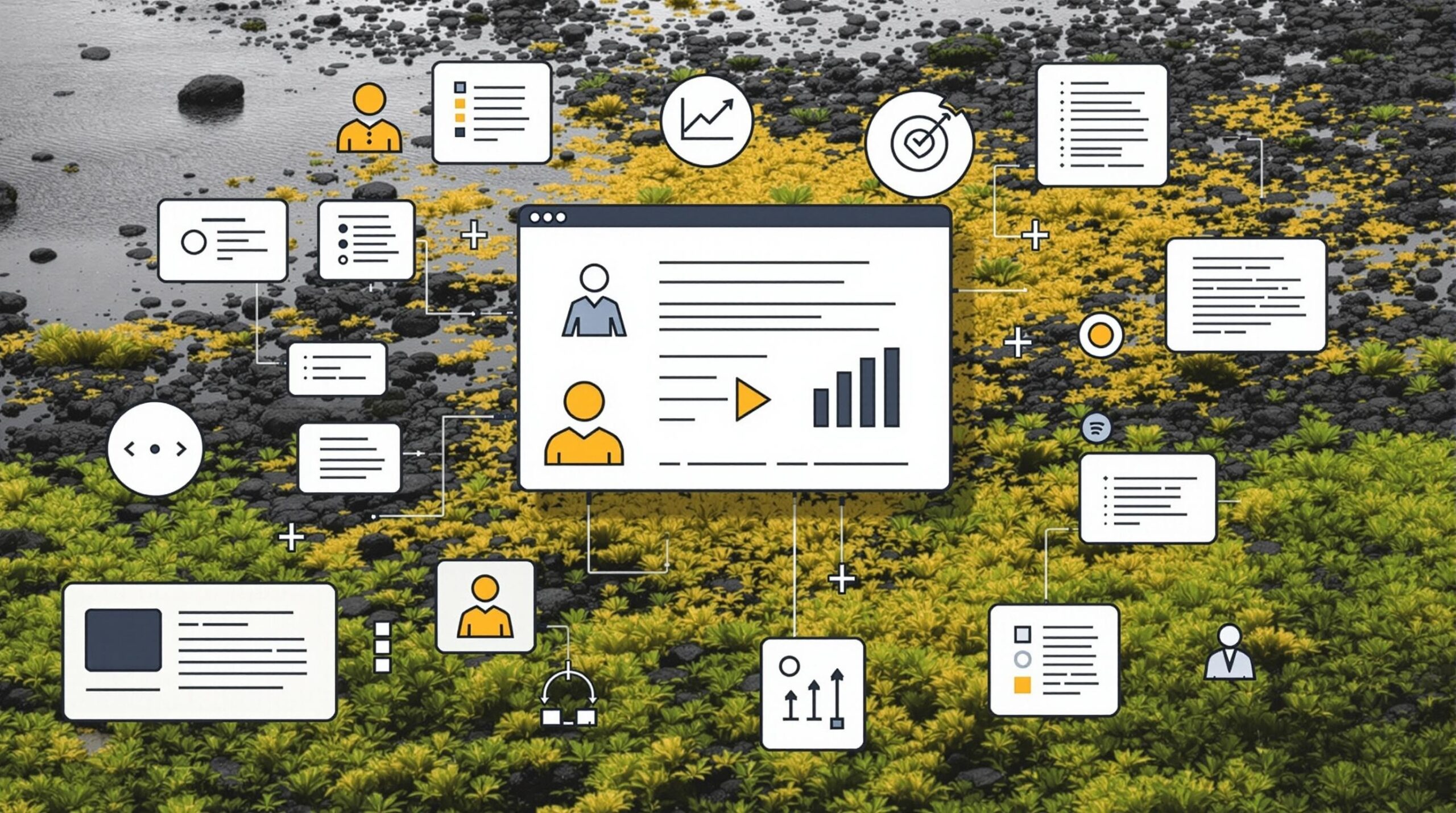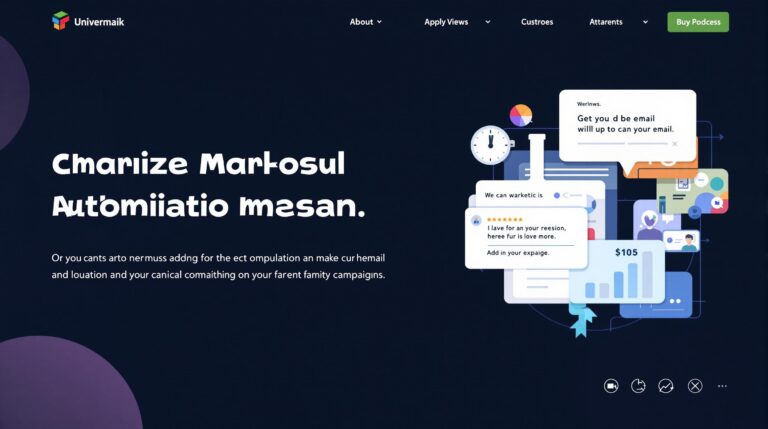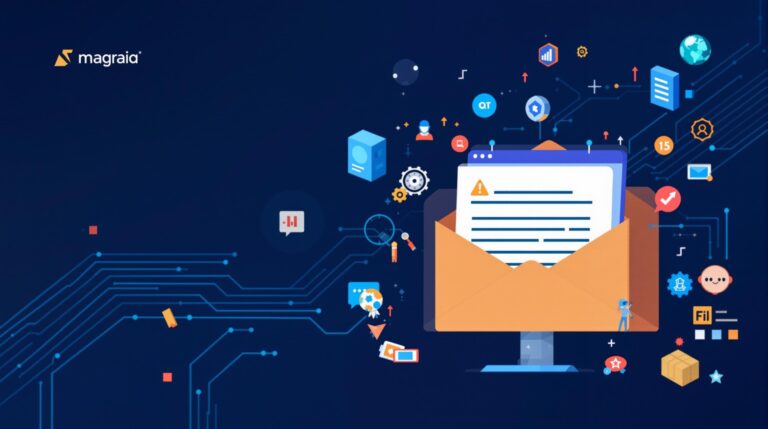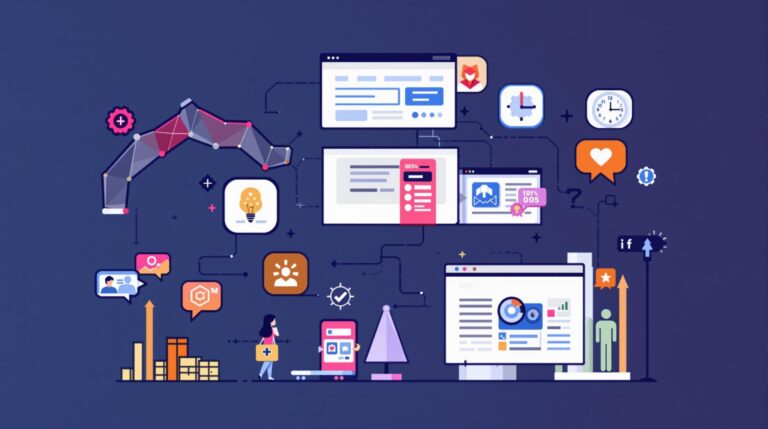How to Automate Your Lead Generation Process with Content Marketing
Content marketing and lead generation automation are forming a powerful partnership in today’s digital landscape. By creating valuable content and using smart tools to distribute it, businesses can capture and nurture leads with minimal manual intervention, resulting in more efficient marketing operations and higher conversion rates.
Key Takeaways
- Businesses using marketing automation see a 451% increase in qualified leads and 74% time savings for their teams
- For every $1 spent on automation, companies generate $5-$8 in revenue while reducing cost per lead from $35 to $12
- High-converting lead magnets like ebooks can provide a 62% conversion lift when properly integrated into automation workflows
- Personalized email sequences drive 6x higher transaction rates when triggered by specific user behaviors
- Companies implementing lead scoring systems experience 30% higher sales productivity by focusing efforts on the most promising prospects
Content Marketing: The Foundation of Automated Lead Generation
The statistics speak for themselves – 80% of marketers using automation tools report increased lead volume, with 77% achieving higher conversion rates than those not using automation. What’s the secret? Content marketing provides the essential fuel for your automation engine.
When you automate content marketing processes, you create a system that can generate leads around the clock. Your blogs, ebooks, webinars, and other content pieces become 24/7 sales representatives that capture interest, collect contact information, and nurture relationships without constant manual intervention.
The timing advantage is particularly significant. Research shows that following up with leads within 5 minutes makes you 9 times more likely to convert them – something virtually impossible with manual processes but completely achievable with automation.
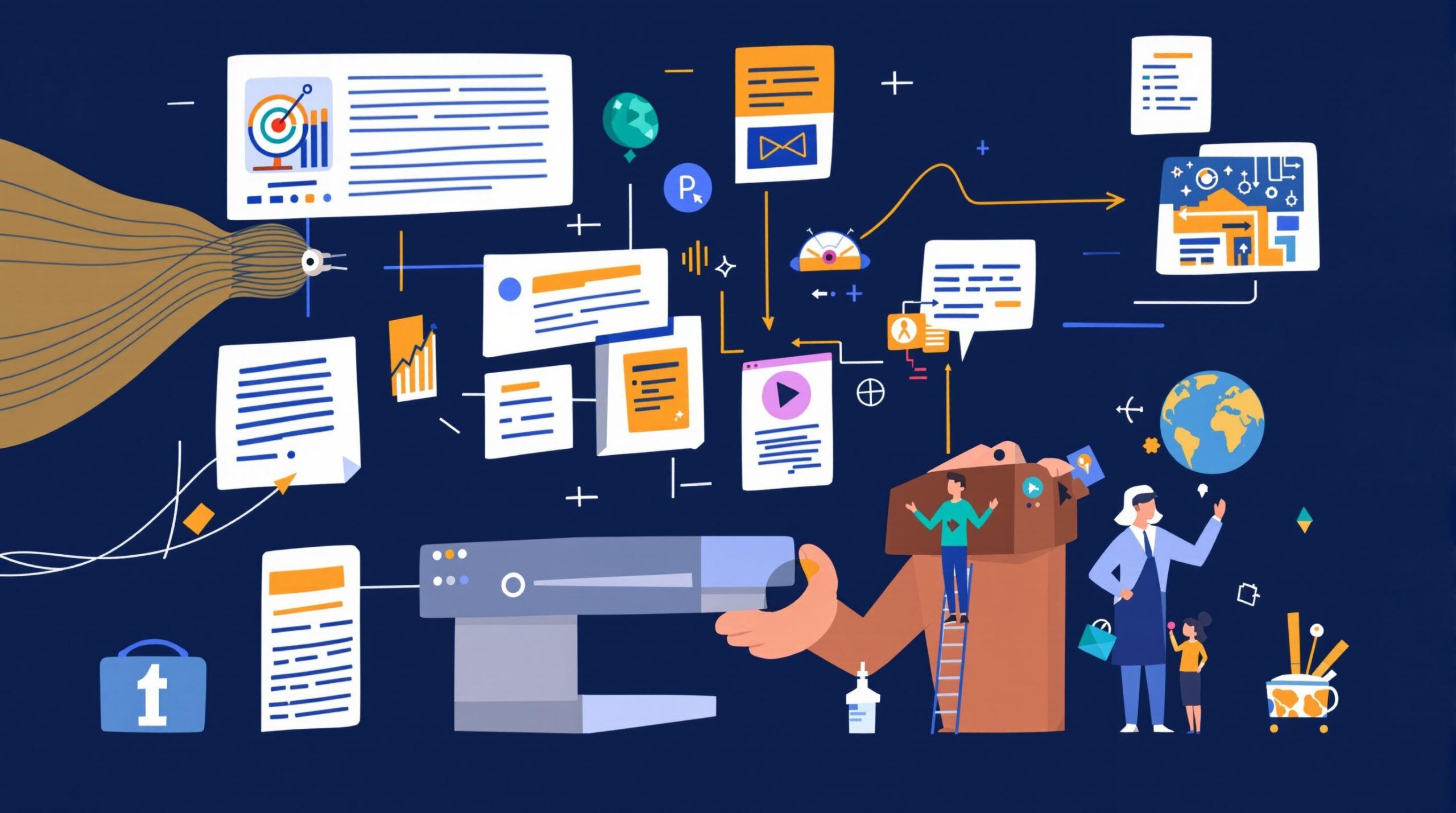
Setting Clear Automation Goals and Measuring Success
Before diving into tools and tactics, it’s essential to define what you want to achieve with your lead generation automation. According to Saffron Edge, 58% of marketers already use automation in their strategies, but success varies greatly based on goal clarity.
The most common automation goals include:
- Reducing manual data entry and follow-up tasks
- Improving lead quality through better scoring and qualification
- Scaling personalized outreach that would be impossible manually
- Accelerating the sales cycle with timely, relevant communications
The financial benefits are compelling. For every dollar invested in automation, businesses typically generate $5-$8 in revenue. The cost differential is equally impressive: manual lead generation averages $35 per lead, while automated processes bring this down to just $12 per lead according to WebFX.
Creating High-Converting Lead Magnets
Your automation success hinges on having valuable content that motivates visitors to share their contact information. The right lead magnets act as powerful entry points into your automated funnels.
According to Skylead, the highest-performing lead magnet formats include:
- Ebooks and guides (providing a 62% conversion lift)
- Webinars and video courses
- Templates and checklists
- Free trials or product demos
The key is creating content that solves specific problems for your target audience. For example, a B2B software company found that offering a templated ebook reduced their lead acquisition costs by 30% while increasing quality – the template format provided immediate value that generic content couldn’t match.
Tools like HubSpot CRM and Monday.com can automatically save leads from form submissions, immediately triggering your follow-up sequences without manual intervention.
Optimizing Lead Capture with Automated Tools
Even the best lead magnets won’t perform if your capture mechanisms are flawed. Modern lead capture automation tools use behavioral triggers and smart timing to dramatically improve conversion rates.
OptinMonster, for instance, increases conversions by 15-20% with its exit-intent popups that detect when visitors are about to leave your site. Wisepops achieves even better results with behavior-triggered campaigns, reporting 25% average conversion rates according to their case studies.
Other effective tools for automating lead capture include:
- Typeform: Interactive forms with conditional logic
- Unbounce: AI-powered landing page builder with smart form integration
- Leadpages: Conversion-optimized templates with automatic A/B testing
The format of your capture mechanism matters too. While traditional email signup forms convert at 1-5%, interactive formats like spin-to-win wheels can achieve 10-15% conversion rates by adding an element of gamification.
Multi-Channel Distribution for Maximum Reach
To automate lead generation effectively, your content needs to reach potential customers across multiple touchpoints. Automated content distribution increases your reach while maintaining consistency across channels.
According to Sitecore, automated social posting increases engagement by 28% compared to manual posting, largely due to optimal timing and frequency. Tools that excel at multi-channel distribution include:
- Hootsuite: Schedule content across social platforms
- HubSpot: Coordinate email, social, and website content from one dashboard
- Mailchimp: Create automated email sequences triggered by specific actions
Email subject line A/B testing should be a core component of your distribution strategy. For example, testing “Your Free Guide Inside” against “Exclusive Download: Limited Time Access” can reveal significant preferences among your audience that can be automatically applied to future campaigns.
An effective content automation strategy requires planning your distribution across channels based on audience behavior patterns rather than your convenience.
Lead Scoring and Prioritization Systems
Not all leads are created equal. Automated lead scoring helps your team focus on the most promising prospects by assigning point values to specific behaviors.
According to Apptivo, companies using lead scoring see 30% higher sales productivity and shorter sales cycles. A basic lead scoring system might award points for actions like:
- +10 points: Visits to pricing page
- +15 points: Downloads high-value content (case studies, detailed guides)
- +5 points: Opens email
- +20 points: Attends webinar
- -10 points: Inactive for 30+ days
The beauty of automated lead scoring is that it runs continuously in the background, constantly reassessing each prospect’s readiness to purchase based on their latest interactions with your content.
B2B and B2C businesses typically use different scoring models. B2B might emphasize company size and role-based actions, while B2C often focuses more on purchase history and browsing patterns.
Personalized Content Nurturing Sequences
Once leads enter your system, automated nurturing sequences keep them engaged with personalized, relevant content. According to Sitecore, personalized emails drive 6x higher transaction rates than generic messages.
A typical automated nurture sequence for an ebook downloader might include:
- Day 1: Thank you email with the download link and a related article
- Day 3: Case study showing real-world application of concepts in the ebook
- Day 7: Invitation to a webinar or demo that goes deeper into the topic
Tools like ActiveCampaign and Salesforce allow you to create dynamic content blocks that change based on a lead’s behavior, interests, or demographic information. This level of personalization would be impossible to maintain manually at scale.
According to Sitecore, automated workflows reduce human error by 65%, ensuring consistent messaging and proper follow-up timing. It’s no wonder that AI-powered email marketing has become a cornerstone of effective lead nurturing.
Your Automation Tech Stack: Choosing the Right Tools
Building an effective tech stack for content-driven lead generation requires selecting tools that work together seamlessly. The most recommended platforms include:
- HubSpot: All-in-one platform combining CRM, email automation, and analytics
- OptinMonster: Specialized in lead capture with exit-intent technology
- Wisepops: Focused on behavior-triggered campaigns with impressive conversion rates
- ActiveCampaign: Strong in advanced email workflows and lead scoring
- Leadpages: AI-powered landing page builder optimized for conversions
According to Wisepops, 80% of users report these tools reduce cost per lead by 40-60%. The time savings are equally impressive – businesses handling 1,000+ leads per month typically save 20 hours per week through automation.
The most important feature to look for is integration capability. Your tools must talk to each other to create a seamless flow of data from capture to nurturing to sales handoff. Most modern platforms offer API connections or direct integrations with popular CRMs and marketing tools.
Sources
skylead.io – How To Automate Lead Generation
saffronedge.com – A Full Guide for Content Marketing Automation
webfx.com – Lead Generation Statistics
leadsbridge.com – The ultimate guide to automated lead generation
apptivo.com – What is Lead generation?
wisepops.com – Best Tools for Automated Lead Generation
s

